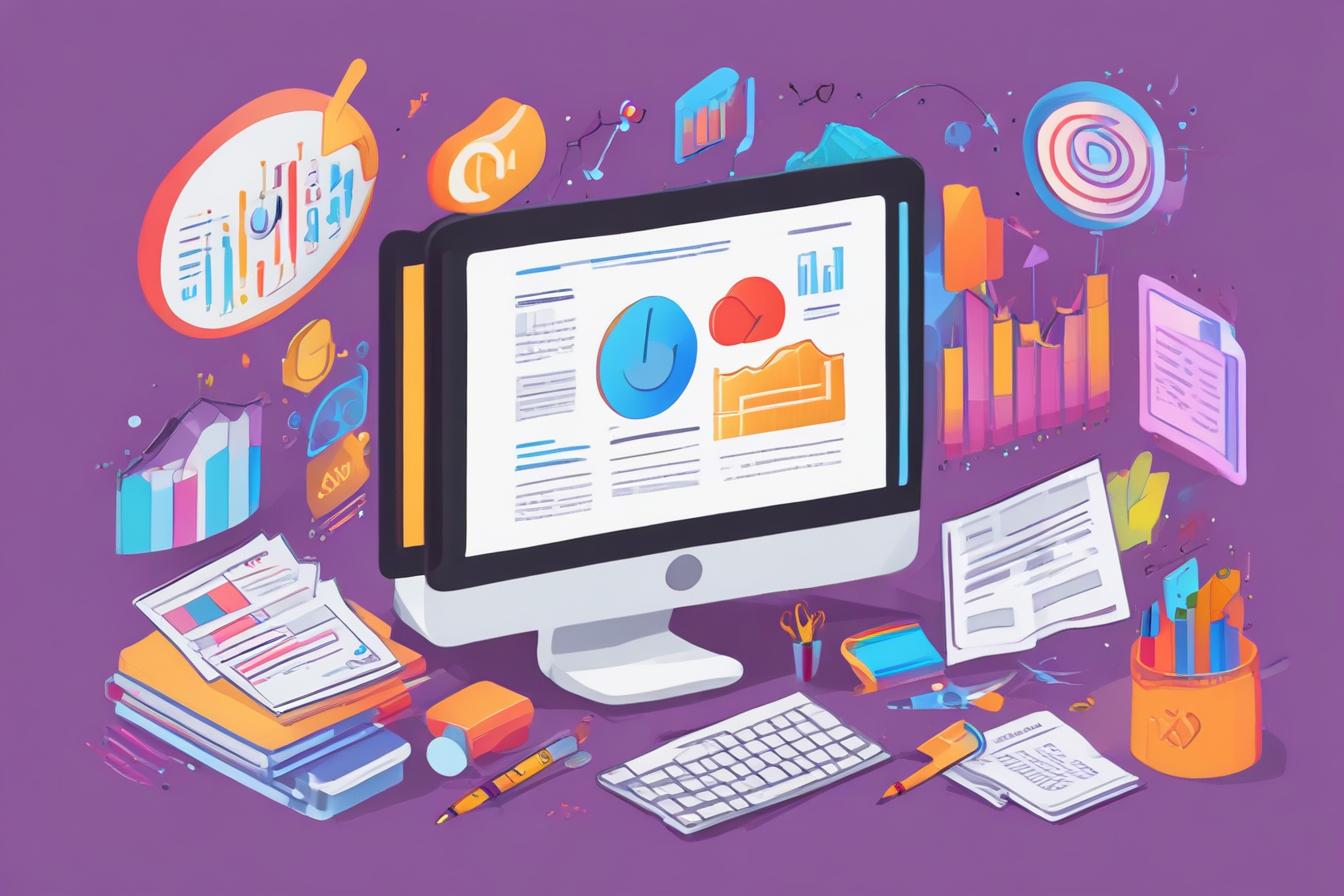What is SEO Content Analytics?
In the ever-evolving landscape of search engine optimization (SEO), content analytics has emerged as a critical component for businesses and websites looking to rank higher on Google and other search engines. SEO content analytics refers to the process of collecting, measuring, and analyzing data related to the performance of your website’s content. By understanding how your content is performing, you can make informed decisions to improve its visibility, engagement, and ultimately, its ability to drive organic traffic and conversions.
Why Content Analytics Matters for SEO
Effective SEO is not just about creating content; it’s about creating content that resonates with your target audience and aligns with search engine algorithms. Content analytics provides valuable insights into how users interact with your content, allowing you to identify areas for improvement and optimize your content strategy accordingly. By tracking key metrics such as keyword rankings, traffic sources, user behavior, and engagement rates, you can pinpoint what’s working and what’s not, and make data-driven decisions to enhance your content’s visibility and relevance.
Key SEO Content Metrics to Track
To effectively leverage SEO content analytics, it’s essential to understand and monitor the right metrics. Here are some key performance indicators (KPIs) to track:
Keyword Rankings
Monitoring your target keywords’ positions on search engine results pages (SERPs) is crucial for understanding your content’s visibility and identifying opportunities for improvement. Regularly tracking your keyword rankings can help you evaluate the effectiveness of your SEO efforts and make necessary adjustments to your content strategy.
Organic Traffic
Organic traffic refers to the number of visitors who reach your website through non-paid search results. Analyzing your organic traffic data can provide insights into the effectiveness of your content in attracting and engaging your target audience. By correlating organic traffic with specific content pieces or keywords, you can identify high-performing content and potential areas for improvement.
Engagement Metrics
Engagement metrics, such as time on page, bounce rate, and pages per session, indicate how users interact with your content. High engagement rates often signify compelling and relevant content, while low engagement may suggest the need for content optimization or improvements.
Conversion Rates
Ultimately, the goal of SEO content is to drive conversions, whether it’s generating leads, making sales, or achieving other business objectives. Tracking conversion rates can help you understand how effectively your content is contributing to your overall marketing and sales goals.
How to Use Analytics to Improve Content Strategy
By analyzing the data and metrics from your SEO content analytics, you can make strategic decisions to enhance your content strategy and improve your overall SEO performance. Here are some ways to leverage analytics for content optimization:
Identify Content Gaps and Opportunities
By analyzing your keyword rankings and organic traffic data, you can identify content gaps or topics that are underrepresented on your website. This can help you uncover new content opportunities and create targeted, relevant content that addresses your audience’s needs and interests.
Optimize Existing Content
If you notice that certain pieces of content are underperforming, you can use analytics to pinpoint areas for improvement. This may involve optimizing on-page elements such as titles, meta descriptions, header tags, or incorporating additional relevant keywords. You can also evaluate user engagement metrics to identify opportunities for enhancing content structure, readability, or visual elements.
Refine Content Promotion and Distribution
Analytics can also provide insights into the most effective channels and tactics for promoting and distributing your content. By analyzing traffic sources, social media engagement, and referral data, you can refine your content promotion strategies to reach the right audiences and maximize visibility.
Tools for Comprehensive SEO Content Analysis
To effectively analyze and optimize your content for SEO, you’ll need the right tools in your arsenal. Here are some popular and powerful tools for comprehensive SEO content analysis:
Google Analytics
Google Analytics is a free and widely used web analytics platform that provides valuable insights into website traffic, user behavior, and content performance. It offers a wealth of data and reports to help you understand how users interact with your content and identify areas for improvement.
Google Search Console
Google Search Console is a free tool provided by Google that helps website owners monitor and maintain their site’s presence in Google Search results. It offers valuable data on search traffic, keyword rankings, and indexing insights, making it an essential tool for SEO content analysis.
SEO Content Analysis Tools
Specialized SEO content analysis tools, such as ContentScale.fr, provide in-depth insights and recommendations for optimizing your content for search engines. These tools can analyze your content’s readability, keyword density, and on-page optimization, and suggest improvements to help you rank higher on Google.

ContentScale.fr, for example, is an online tool that uses AI to generate SEO-optimized articles at scale. By leveraging advanced algorithms and natural language processing, ContentScale.fr can create high-quality, SEO-friendly content at a fraction of the cost of hiring a professional SEO content writer. With its ability to optimize content for keyword density, heading hierarchy, readability, and other critical SEO factors, ContentScale.fr can help you save time and money while staying ahead of your competitors in the race for higher search engine rankings.
Integrating SEO Analytics into Your Workflow
To truly harness the power of SEO content analytics, it’s important to integrate it seamlessly into your content creation and optimization workflow. Here are some steps to help you achieve this:
Set Clear Goals and KPIs
Begin by defining your content marketing goals and the key performance indicators (KPIs) that align with those goals. This will help you focus your analytics efforts on the metrics that matter most to your business.
Establish Baseline Metrics
Before implementing any changes or optimizations, establish baseline metrics for your existing content. This will provide a reference point for measuring the effectiveness of your future efforts.
Regularly Analyze and Report
Set up a consistent schedule for analyzing your SEO content analytics and reporting on your findings. This could be a weekly, monthly, or quarterly process, depending on the volume and frequency of your content publishing.
Collaborate with Stakeholders
Involve relevant stakeholders, such as content creators, marketing teams, and decision-makers, in the analytics process. Share your findings and insights, and collaborate on developing data-driven content strategies.
Continuously Optimize and Iterate
Use the insights gained from your analytics to continuously optimize your content and refine your strategies. Treat content optimization as an ongoing process, adapting and iterating based on the data and results you observe.
Case Studies: SEO Content Analytics Success Stories
To illustrate the power of SEO content analytics, let’s explore a few real-world success stories:
Improving Organic Traffic and Engagement
A lifestyle blog noticed a decline in organic traffic and user engagement over several months. By analyzing their content analytics, they identified several underperforming articles and optimized them for better keyword targeting, improved readability, and enhanced visual elements. Within a few months, they saw a 30% increase in organic traffic and a significant improvement in user engagement metrics like time on page and pages per session.
Uncovering Content Gaps and Opportunities
An e-commerce company realized they were missing out on valuable search traffic for certain product categories. Through keyword research and content gap analysis, they identified high-volume, low-competition keywords that were relevant to their business. They then created a series of informative blog posts and product guides targeting those keywords, resulting in a 25% increase in organic traffic and a boost in sales for those product categories.
Optimizing Content for Featured Snippets
A software company noticed that some of their competitors were dominating featured snippets (the brief answer boxes displayed at the top of Google search results) for certain queries related to their industry. By analyzing the structure and formatting of the content that was earning featured snippets, they optimized their own content to better align with Google’s guidelines. Within a few months, they saw a significant increase in featured snippet visibility, driving more organic traffic and improving their brand’s authority in their niche.
Conclusion
In today’s highly competitive digital landscape, SEO content analytics is an indispensable tool for businesses and websites looking to rank higher on Google and drive more organic traffic. By leveraging the right metrics, tools, and strategies, you can gain valuable insights into your content’s performance and make data-driven decisions to optimize your content strategy and stay ahead of the competition.
Remember, SEO content analytics is not a one-time effort but an ongoing process that requires continuous monitoring, analysis, and optimization. By integrating analytics into your content creation and promotion workflows, you can stay agile and responsive, adapting your strategies to align with evolving user behavior and search engine algorithms.
To get started with SEO content analytics and take your content strategy to the next level, consider leveraging powerful tools like ContentScale.fr. With its AI-driven content generation capabilities and advanced SEO optimization features, ContentScale.fr can streamline your content creation process, help you save time and money, and empower you to outpace your competitors in the race for higher search engine rankings.
So, what are you waiting for? Embrace the power of SEO content analytics today and unlock the full potential of your content to drive organic traffic, engage your audience, and achieve your business goals.
